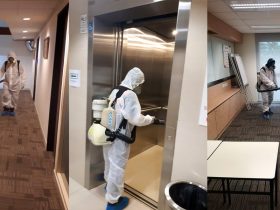In the fast-paced world of construction, efficiency is key. A streamlined construction project not only saves time and money but also ensures that the end product meets the highest standards of quality.
In this comprehensive guide, we will delve into effective strategies to optimize your construction project from start to finish.
By focusing on areas such as planning, workforce management, technology integration, and effective communication, you can make your construction project a resounding success.
Leveraging Technology for Enhanced Productivity
In today’s digital age, leveraging technology is non-negotiable for a streamlined construction project. From project management software to advanced construction tools, technology can significantly enhance productivity and accuracy.
Project management software, for instance, helps track progress, manage resources, and maintain timelines effectively. These tools offer real-time updates and analytics, enabling project managers to make informed decisions quickly.
The integration of Building Information Modeling (BIM) technology is another game-changer. BIM provides a digital representation of the physical and functional characteristics of a project, facilitating better planning and coordination.
It allows for improved visualization, early detection of potential issues, and more efficient collaboration among stakeholders.
Additionally, the use of drones for site surveying and monitoring can save a substantial amount of time and provide more accurate data. Drones offer a bird’s-eye view of the construction site, making it easier to track progress and promptly identify any areas of concern. This technology not only speeds up the surveying process but also enhances worker safety by reducing the need for manual site inspections.
Prioritizing Workforce Comfort and Efficiency
The backbone of any construction project is its workforce. The comfort, safety, and efficiency of your team are paramount to the success of your project. One of the most overlooked aspects in this regard is workforce lodging.
Providing comfortable, convenient, and safe accommodations for your team can significantly boost morale and productivity. Lodging that is close to the worksite reduces travel time and fatigue, allowing workers to be more focused and energetic.
Additionally, comfortable accommodations can serve as a haven for rest and rejuvenation, leading to better overall performance.
Investing in quality lodging facilities also sends a message to your workforce that their well-being is a priority. This can lead to increased loyalty, reduced turnover, and a more harmonious work environment.
Moreover, the physical and mental well-being of your team is a critical component of project efficiency. A well-rested and content workforce is less likely to make mistakes, thus reducing the risk of accidents and costly delays.
It’s also important to consider the amenities provided within the lodging. Features like Wi-Fi, comfortable bedding, and recreational facilities can make a significant difference. Remember, the goal is to create an environment where workers can relax and recharge after a long day’s work.
Effective Communication: The Key to Success
Effective communication is the cornerstone of any successful project. In construction, where multiple teams and stakeholders are involved, maintaining clear and consistent communication is vital. This includes regular meetings, transparent reporting, and the use of collaborative tools.
Establishing a solid communication protocol ensures that everyone is on the same page and can react swiftly to any changes or challenges.
It’s crucial to have a well-defined communication hierarchy and channels. Whether it’s through regular site meetings, digital communication platforms, or direct lines of communication with project leaders, every team member should know how and where to convey their messages.
Additionally, fostering an environment where feedback is encouraged and valued can lead to innovative solutions and continuous improvement.
Regular updates to all stakeholders, including clients, contractors, and suppliers, help in managing expectations and building trust. Transparency in communication not only mitigates misunderstandings but also ensures that any issues are addressed promptly, thereby reducing the risk of delays.
Planning and Organization: A Strategic Approach
The success of a construction project largely depends on thorough planning and organization. This starts with a detailed project plan that outlines every aspect of the project, from timelines and budgets to resource allocation and contingency plans.
A comprehensive plan serves as a roadmap, guiding the project through each phase and ensuring that all team members are aligned with the project goals.
Effective resource management is also crucial. This involves not just the allocation of materials and equipment but also the efficient scheduling of labor. Ensuring that the right resources are available at the right time prevents bottlenecks and keeps the project moving smoothly.
Risk management is another critical aspect of planning. Identifying potential risks early on and developing strategies to mitigate them can save a lot of trouble down the line. This includes factors like weather conditions, supply chain disruptions, and regulatory changes.
A proactive approach to risk management helps in maintaining project momentum and avoiding costly setbacks.
Embracing Sustainability and Environmental Responsibility
In the contemporary construction landscape, embracing sustainability and environmental responsibility is not just a trend but a necessity. Sustainable construction practices not only benefit the environment but also enhance the long-term viability and profitability of the project.
This involves the use of eco-friendly materials, energy-efficient designs, and waste-reduction strategies. By adopting green building standards, such as LEED (Leadership in Energy and Environmental Design), you can significantly reduce the environmental impact of your construction project.
The use of recycled and locally sourced materials is a key element in sustainable construction. These materials reduce the carbon footprint associated with transportation and support local businesses.
Additionally, incorporating renewable energy sources like solar panels or wind turbines can lead to long-term cost savings and reduce dependency on non-renewable energy.
Water conservation is another critical aspect of sustainable construction. Implementing rainwater harvesting systems and efficient water management practices can significantly reduce water usage.
Moreover, these practices can help in achieving regulatory compliance and may qualify the project for certain green building certifications.
Conclusion
Streamlining a construction project requires a multifaceted approach that encompasses workforce management, technology integration, effective communication, and strategic planning. By prioritizing the comfort and efficiency of your workforce, leveraging the latest technologies, maintaining clear communication, and thorough planning, you can ensure the success of your construction project.
These strategies not only enhance productivity but also contribute to a safer, more harmonious work environment. Remember, a streamlined construction project is not just about speed and efficiency; it’s about building quality and value that stands the test of time.










